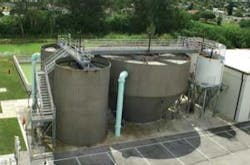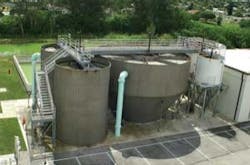CAMBRIDGE, MA, Nov. 15, 2009 -- In work that will enable long-term solutions to one of the planet's major environmental health disasters, MIT scientists led by Charles F. Harvey, the Doherty Associate Professor of Civil and Environmental Engineering, Charles F. Harvey have learned that human-made ponds are a primary source of the arsenic-contaminated drinking water found in wells at their field site in Bangladesh. Organic carbon settles to the bottom of the ponds and then seeps underground where it is metabolized by microbes, setting up the chemical conditions that cause naturally occurring arsenic to dissolve off the sediment and into the groundwater. That water is then drawn laterally through the aquifer into tube wells used for both irrigation and drinking. The researchers also found that rice fields irrigated with arsenic-laden groundwater act to filter arsenic out of the system.
Why it matters
This work will enable long-term solutions to one of the worst environmental health disasters of our time by providing the scientific information needed to site new tube wells at appropriate depths. Over the last 30 years, many people in Bangladesh switched their drinking water supply from ponds and rivers to groundwater pumped from shallow tube wells in a massive national effort to prevent cholera and other bacterial water-borne diseases. The drinking water from these wells led almost immediately to severe, widespread arsenic poisoning, which is now estimated to afflict 2 million people. Despite years of effort by researchers, the exact origin of the dissolved arsenic had not been pinpointed -- until now. The MIT work will enable solutions by providing the scientific information needed to site new tube wells at appropriate depths.
How they did it
Working in the Munshiganj district of Bangladesh, former graduate students Rebecca Neumann and Khandaker Ashfaque developed an understanding of the surface and underground water flow patterns in a 6 square-mile area using data collected from surface and well water over a seven-year period. They used natural tracers and a 3-D model to track rice field and pond water as it traveled into and through the subsurface. In addition, they performed tests on rice field and pond waters to determine if the organic carbon in these water bodies would stimulate arsenic mobilization off of the soils and sediments.
Next steps
Harvey and other researchers plan to provide deep wells for several villages at geographically distinct locations, and combine hydrologic and biogeochemical testing of those wells with a study of villagers' health improvements, with specific interest in children's neurological development. A goal of this study is to develop practical guidelines for safe wells.
Source: "Anthropogenic influences on groundwater arsenic concentrations in Bangladesh," by Rebecca B. Neumann, Khandaker N. Ashfaque, Charles F. Harvey et al, in the Nov. 15 online edition of Nature Geoscience.
Funding
This research was funded by the Division of Earth Sciences of the National Science Foundation and the Center for Environmental Sensing and Modeling of the Singapore-MIT Alliance for Research and Technology.
Written by Denise Brehm, MIT News Office
###




